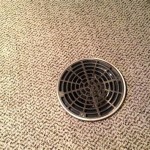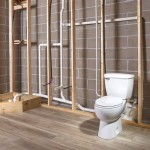Machine To Pump Water Out Of Basement
A flooded basement is a common problem for homeowners, often caused by heavy rainfall, sewer backups, or broken pipes. Water in the basement can cause significant damage to belongings, structural issues, and health concerns. To address this problem, sump pumps are essential pieces of equipment designed to remove water from basements, protecting the property and its occupants. This article will explore the functionality of sump pumps and their various types, providing homeowners with the information needed to make informed decisions regarding their basement water management.
Types Of Sump Pumps
Sump pumps come in various types, each with its unique features and applications. Understanding these differences is crucial for choosing the right pump for a specific basement situation.
Pedestal Sump Pumps
Pedestal sump pumps are a common and affordable option. They feature a motor mounted on a pedestal above the sump pit, with the pump itself located at the bottom of the pit. This design offers easy access for maintenance and repairs. Pedestal sump pumps are generally suitable for basements with moderate water accumulation levels.
Submersible Sump Pumps
Submersible sump pumps are completely submerged within the sump pit. Their compact design and sealed motor make them particularly suitable for tight spaces. Submersible pumps are known for their quiet operation and ability to handle heavy water flows. These pumps are an excellent choice for basements prone to frequent or significant flooding.
Battery Backup Sump Pumps
Battery backup sump pumps are a crucial addition for homeowners concerned about power outages. When the main power supply is interrupted, a battery-powered backup system automatically engages, ensuring continuous water removal. Battery backup pumps are particularly essential in areas with frequent power failures or during severe weather events.
Factors To Consider When Choosing A Sump Pump
Several factors should be considered when choosing a sump pump for a basement. These factors will help determine the most appropriate pump type and capacity for the specific needs of the homeowner.
Water Flow Rate
The water flow rate, measured in gallons per minute (GPM), determines the pump's capacity to remove water. A pump with a higher GPM is necessary for basements with heavy water accumulation. Estimating the basement's water inflow rate is essential for selecting a pump with sufficient capacity.
Head Height
Head height refers to the vertical distance the pump needs to lift water to the discharge point. This distance influences the required pump power and efficiency. Higher head heights demand more powerful pumps to effectively move water to the desired location.
Discharge Location
The discharge location - where the water is discharged - is crucial for proper water removal. Common options include a nearby sewer drain, a storm drain, or a drainage system leading away from the house. Consider the distance to the discharge point and any potential obstacles when choosing the discharge method.
Automatic or Manual Operation
Sump pumps can be either automatic or manual. Automatic pumps activate when the water level in the sump pit reaches a predetermined level. Manual pumps require manual operation to activate the pumping process. Automatic pumps are generally preferred for convenience and consistent water removal.
Importance Of Regular Maintenance
To ensure a sump pump's optimal performance and longevity, regular maintenance is crucial. A proactive approach can prevent problems and ensure the system functions as intended.
Regular Inspections
Inspecting the sump pump regularly allows for early detection of potential issues. Check the pump's operation, the sump pit for debris accumulation, and the discharge line for blockages or leaks.
Routine Cleaning
Clean the sump pit and pump regularly to remove debris that can hinder its operation. This involves removing accumulated sediment, leaves, or other foreign objects that may obstruct the pump's functionality.
Testing The System
Regularly test the sump pump's operation, particularly after heavy rainfall or during power outages. This ensures the pump is functioning correctly and ready to address any potential basement flooding.
Investing in a reliable sump pump and maintaining it regularly is an essential step in protecting a basement from water damage. By understanding the different types of pumps and the factors to consider before purchasing one, homeowners can make informed decisions and ensure the safety and integrity of their property.

Flooded Basement Cleanup Water Removal Sudbury Wayland Weston Concord Ma Nh Youtube

Home Sump Pump Systems In Connecticut Models Stamford Norwalk West Hartford Ct

Submersible Water Pump Buyer S Guide How To Pick The Perfect

Vevor Submersible Sump Pump Water 1 2hp 3960gph Cast Iron W Float Basement Walmart Com

Vevor Sump Pump 1 5 Hp 6000 Gph Submersible Cast Iron And Stainless Steel Water 2 Discharge With 4 Adaptor Automatic Vertical Float Switch For Indoor Basement Basin Walmart Com

Basement Drainage Water Pumps

Water Pumps The Home

Why Do You Need A Sump Pump Everdry Toledo Ohio Michigan

Vevor Submersible Sump Pump Water 1 2 Hp 4320gph Cast Iron Steel Basement Ebay

Heat Pump Water Heater Massachusetts Clean Energy Center
See Also








